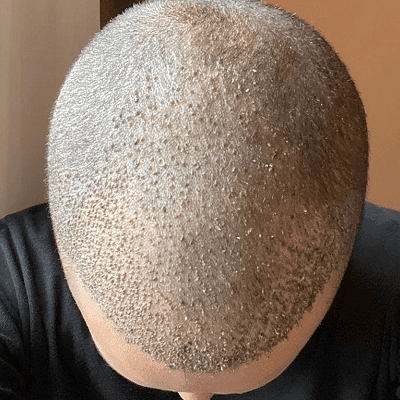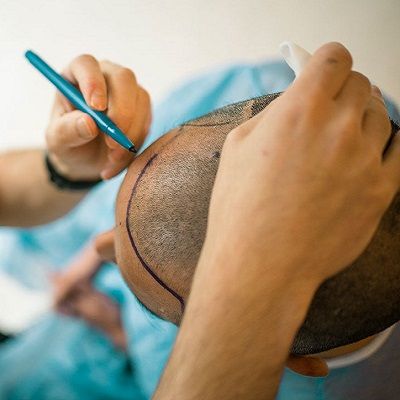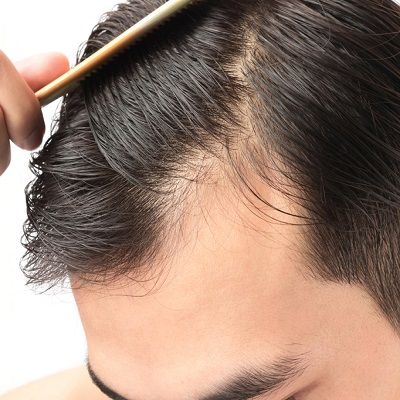
Hair transplants are a common procedure that many people have undergone in order to remedy hair loss. However, with this procedure comes the risk of scabbing during the recovery and healing phases. Hair Transplants and Scabs: Why Do They Appear In Dubai? Scabs can appear shortly after surgery, and if left untreated, they may cause permanent scarring due to their increased presence over time. It is important for those who are undergoing a hair transplant to be aware of why these scabs form and how best to treat them so as not to suffer long-term damage from the treatment itself. The formation of scabs is usually caused by contact between grafts—tiny pockets where hairs were extracted—which then become infected or irritated, leading to further inflammation around these areas.
What is a Hair Transplants?
Hair transplants have expanded in favor in recent years as a treatment option for those suffering from hair licking or thinning. While the process vows a larger head of hair, it’s substantial to recognize that there may be some transitory adverse effects, including the presentation of scabs. Before we get into the components of scabs, it’s crucial to understand how a hair transplant works. Hair Transplantation is done in the following two ways:
FUT Hair Transplants:
FUT involves removing a strip of skin from the donor zone (usually the rear of the head) and dragging and transplanting respective hair bristles to the recipient spot.
FUE Hair Transplants:
In contrast, FUE implicates the extraction of unique hair follicles from the contributor zone without the necessity for a skin stripe. These strands are then transplanted to parts where hair is thinning or skipping. But to infiltrate the hair strands.
Both methods entail causing little incisions in the recipient area. Scabs might ripen throughout this method.
What Causes Scabs After a Hair Transplant?
Scabs that form as a by-product of a hair transplant are a standard portion of the recuperation operation. The following are the key causes of their impression:
- Micro-injuries to the Scalp: Micro-damages are driven by the infinitesimal incisions made in the recipient parts during the transplant methodology. The scalp, like any other wound on the body, will build scabs to conceal and overhaul the afflicted region.
- Dried Blood and Serum: Minor bleeding may transpire during the process, which can integrate with serum (the clear fluid that aids in wound healing) and form a crust over the freshly embedded hair strands. This crust unhurriedly toughens and hardens into scabs.
- Clotted Lymph: Lymph is a colorless fluid that comprises white blood cells and recreates an important part of the immune system of the body. The liquid may assemble around the insinuated grafts after a hair transplant, constructing scab expansion when the fluid dries.
Management and Prevention:
After a Hair Transplant in Dubai to prevent infection, it’s important for patients participating in postoperative care at home to keep their scalp moisturized by applying gentle cleaning materials such as anti-inflammatory creams prescribed by doctors or shampoos designed specifically for hair regrowth following an operation like this one. Taking proper precautions will help limit future scars while also promoting healthy healing at the same time. While scabs are an inevitable part of the healing process following a hair transplant. There are actions you may take to control and minimize their appearance:
- Follow Your Surgeon’s Post-Op Care Instructions: Your surgeon will nourish you with detailed post-operative care education. These may be particular cleaning and care instructions for the recipient area to prevent condition and scab expansion.
- Keep the region Moist: Using saline solution or a suitable post-operative lotion on the recipient parts helps keep them moist and avoid the formation of scabs.
- Avoid Picking or Scratching: While it may be compelling to pick at or strike the scabs, do so at all costs. Scab picking can drive disorder, graft cracks, and scarring.
- Be patient: Scabs are a transitory consequence that will peel off spontaneously as the rehab process refines. It’s critical to be patient and let your body heal on its own.
- Stay Hydrated: Consume enough water to keep your skin and scalp hydrated, which can assist the recuperation process.
- Sun protection: Keep your scalp out of direct daylight, predominantly in hot and bright residences like Dubai. Wear a cap or spread sunscreen on the feast area to bypass sunburn.
- Avoid Strenuous Activities: Avoid harsh physical exercises that create exaggerated perspiration or potentially result in crevasse in the transplanted place for the first few days following the transplant.
- Maintain a Balanced Diet: Ingesting a beneficial diet affluent in nutrients that elevate skin and hair fitness will enable the healing process. Include vitamin and mineral-rich meals.
- Medication Compliance: If your surgeon has advised any remedies, such as antibiotics or anti-inflammatory meds, be confident you will take them as executed.
- Follow your planned follow-up appointments with your surgeon on a routine basis. They may keep track of your improvement, handle any hardships, and offer advice on scab prevention.
Cost of a Hair Transplant:
The Cost Of a Hair Transplant In Dubai is budget-friendly. But you must meet your doctor for the cost. It ranges from AED 7,000 to AED 14,000. But this may be altered because of the following elements:
- The expertise of the surgeon.
- The location of the clinic.
- The severity of the problem.
- The need for the hair grafts.
- The healing medications.
Why Choose Us?
Scabs following a hair transplant are a usual and anticipated side effect of the body’s genuine recuperation process. The Dynamic Aesthetic Clinic In Dubai is a reliable place for the procedure. Understanding why they emerge and clinging to sufficient post-operative care recommendations are critical for full recuperation. Remember that it takes time for your new hair to come in and the scabs to cure and disappear. If you have any worries or questions concerning your hair transplant recovery, always seek advice and comfort from your surgeon.











